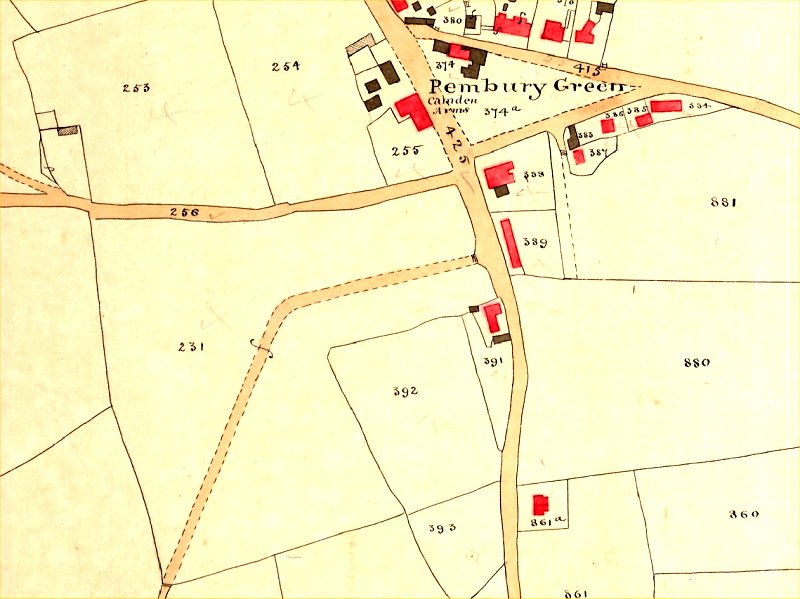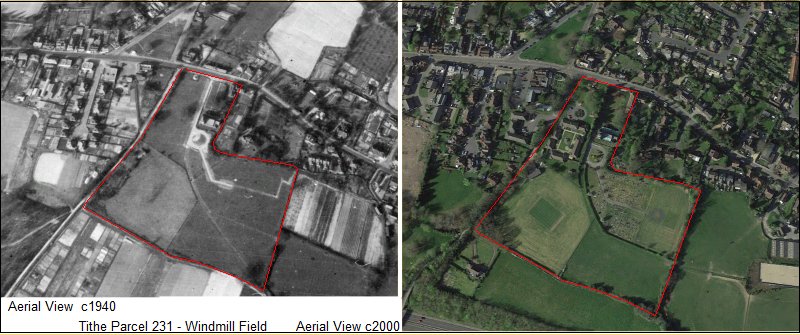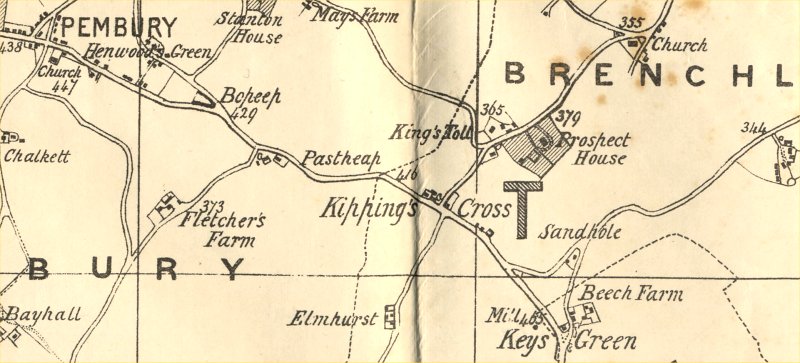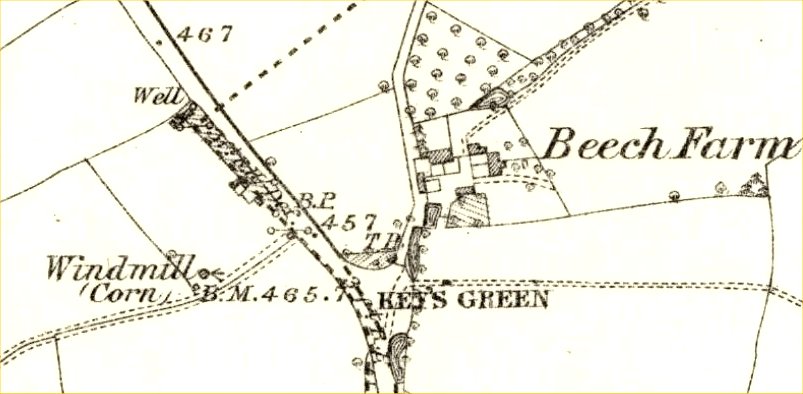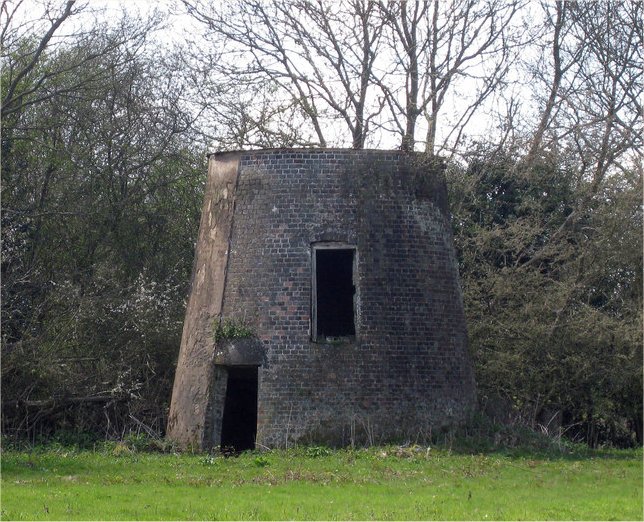Localities
- Possible Windmills in Pembury
Localities - WindmillsIn August 2023 we were contacted by Rob Cumming, an author of books on windmills. He came with some evidence of there being a windmill in Lower Green around 1831. What we have listed below is the 1831 advertisement, a lot of circumstantial evidence, and some speculative guesswork. Currently there is no positive identification of the location of this windmill. Before venturing forth with any additional sluething or investigation please consider these suggestions - The location suggests 'adjoining good Turnpike road'. It would be preferable to consider 'adjoining' as 'close by' rather than literally 'attached to'. The sale suggests 3 acres of land adjoining the mill. This may not be 3 acres where the land plots are all immediate neighbours. Recent speculation dismisses some possible sites in favour of others because of preferential landscape location on higher ground or hill profiles. At any time in recent history all the countryside was owned and managed. The siters of windmills may not have had the luxury of choosing their ideal spot. They were not in a position to wander the countryside, spot a piece of open hillside and gleefully announce "We'll put it there". It's a fallacy for today's observers to look for such ideal sites in the landscape as contenders for results in our kind of investigations. As in the 21st Century you can only buy, rent or use land that is available to you at the time.
A Windmill in PemburyBelow is a copy of the advertisement for the sale of the windmill that appeared in Kent newspapers, 3 times over 5 months. Not a quick sale. Below the advertisement are Rob Cumming's comments. 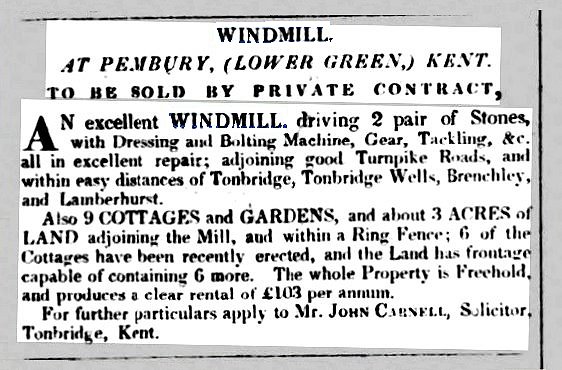 Maidstone Journal and Kentish Advertiser - Tues 26 April 1831 South Eastern Gazette - Tues 30 May 1831 Maidstone Journal and Kentish Advertiser - Tues 2 August 1831 Hi Tony
Congratulations on the
excellent Pembury History site which I've only
just found.
I've just had a scan of the
mills section, as I've written the odd book on
Kent Windmills. I'm trying to do Kent in
sections as the much lauded book by William
Coles-Finch, written in 1933 missed so much in
terms of mills and information. I wrote
this lot on the watermills about 30 years ago,
and haven't really touched it since:
"PEMBURY, Spring Grove Mill.
TQ632431. Tributary of R. Medway.
Traces only. Spring Grove Mill was a
corn mill which ceased operating under Edwin
Coppard around 1880, but it probably survived
into this century as there are local
reminiscences of it. It had been
demolished by 1939 however; today only the
impressive mill pond, mill house and fall for an
overshot wheel, together with some foundations
remain.
PEMBURY, Herrings Mill.
TQ644424. Tributary of R. Medway. Site
only. This site was probably only established as
a mill in the first half of the nineteenth
century; it ceased work between 1862 and 1868
and remained derelict perhaps into this century
as it is remembered by an elderly
resident. Water extraction probably
ended the mills working life, and the miller may
well have received compensation. The site
is now woodland and forms part of a sewage
works."
The windmill bit interests me
though. I can say I have no reference to a
mill at Windmill Field.
I do however have a number of
newspaper references to a windmill at Lower
Green. I suspect its presence was very
brief, and it was probably built after the 1819
OS map survey, and gone before the 1840 tithe
map. Various newspaper adverts advertise
it for sale in 1831. I suspect the
owner/builder became more interested in building
houses at Lower Green than a fairly new working
windmill, and I strongly suspect the mill was
sold for removal, probably to another parish
locally, presumably the land being more valuable
for building. The practice of moving
windmills was very common in the nineteenth
century, much like moving a business.
Anyway, attached a couple of
newspaper references. I suspect that the
site of it was on the plots marked 220 and 309,
where it was replaced by housing.
Hope this
helps, and happy for you to put it up, and/or
share with the people researching this subject.
Plot 309 is in Cornford Lane
near Mouseden farm and does not relate to Lower
Green.
Plot 220 is Brickhurst Field to the south-west of Brickhurst Farm, remote from Turnpike Roads and Lower Green. Below are copies of the Lower
Green portions of the 1840 Tithe map
This survey would have been conducted around 1838, some 7 years after the advertisement for sale. Above: Southern / Western part of Lower Green at Romford Road and Beagleswood. The area '415' is the junction of Lower Green Road and Henwood Green Road. The double lines across the roads indicate the toll gates for paying road taxes. Both roads needed gates to avoid a cheating detour via Romford Road. To help assess the size of 3 acres here are some of the plot sizes on the above map. Plot 821 - 2 acres Plot 940 - 1 acre Plot 798 - 1 acre Plot 818 - 0.8 Acre Plot 825 - 0.5 Acre Plot 819/820 - 0.3 Acre Plot 818 is shown fenced or protected, maybe raised, and is the only contender on the Tithe map for "... within a Ring Fence". For reference purposes plots 819 & 820 (12 houses) were known as Slate Row. 815 (10 houses) was known as Red Row. Plot 813 is occupied by Waterfield House Surgery. The building 823 is 3 dwellings. Red buildings are inhabited. Black or grey buildings are unihabited (churches, barns, sheds, stables, etc). Below : Northern / Eastern part of Lower Green at Church Road The 1831 sale of 3 acres does not specify that it is one plot or that any multiple plots totaling 3 acres are adjoining neighbours. Buildings shown in red are habitable. Buildings shown in grey or black are unihabitable (sheds, churches, workshops, barns, etc) Plot 801 - 2 acres Plot 926 - 1 acre Plot 922 - 2 acres 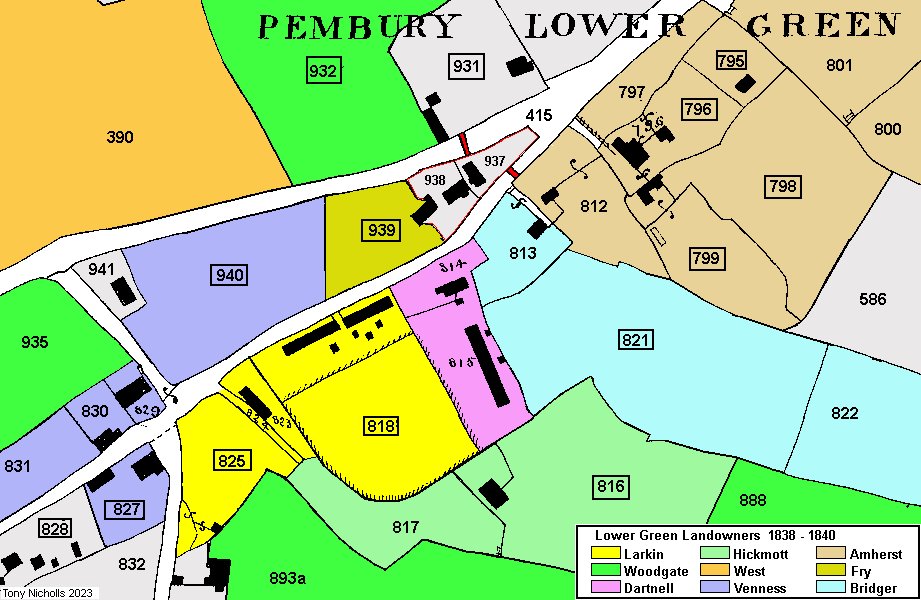 The map above gives an indication of the landowners of plots c1838 - 1840. If the windmill plot(s) was sold sometime after 1831 clues to its ownership might be taken from the 1838 landowners. If the windmill plots were NOT sold the owner may have demolished the windmill for better use of the land. If the windmill plots were sold but the windmill was NOT needed it may have been demolished. We cannot tell from the available data if the 1831 sale was successful. Plots 937 and 938 were owned by The Road Trusts. 937 was the gate house for collecting road taxes. Toll gates shown in red. The following data has been gathered by Jane Grooms. This is a result of searches for Pembury Debts, Deaths, Sales and Purchases in the years around 1831. It is hoped that something may spark a useful line of investigation into this windmill. 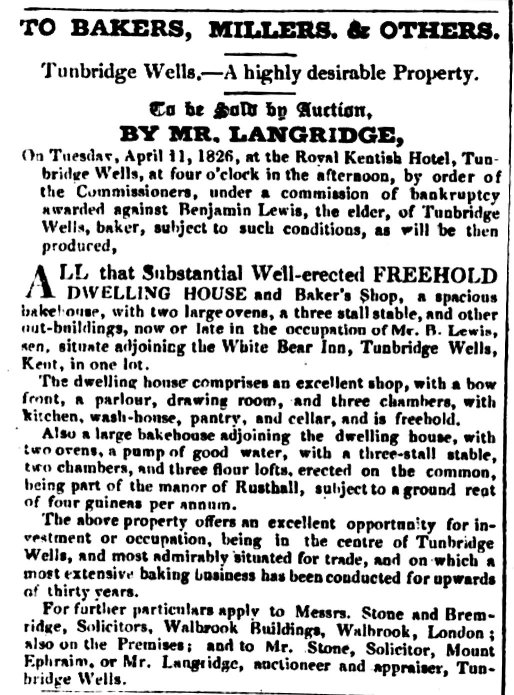 Brighton Gazette 6 April 1826 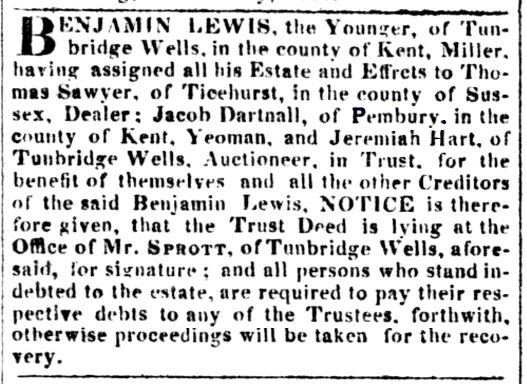 Sussex Advertiser 16 Jan 1826 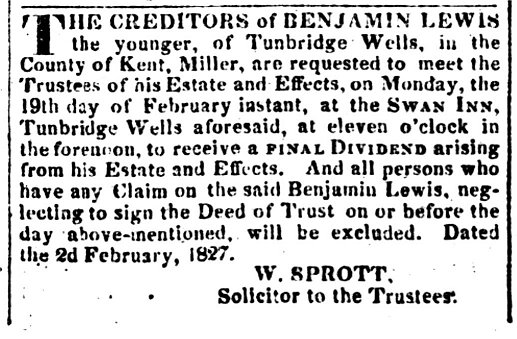 Sussex Advetiser 5 Feb 1827 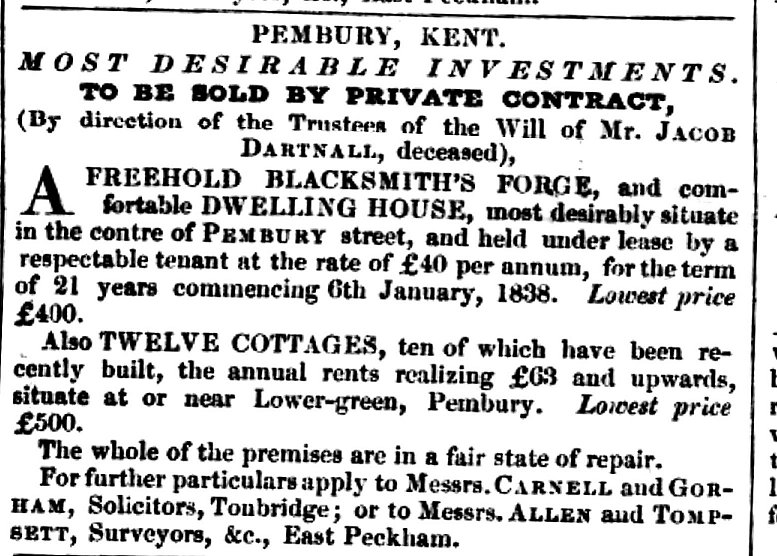 Maidstone Gazette 19 April 1842  Maidstone Journal and Kentish Advertiser 3 Oct 1843
Any further developments, corrections or edits will be posted here. Tony Nicholls Aug 2023 |
|
|
Pembury History
|
|
  |
|
IMPORTANT !!! This needs your help. All contributions will be credited. If you have any further information or corrections please contact me –
Tony Nicholls email: pemburyhistory@gmail.com


